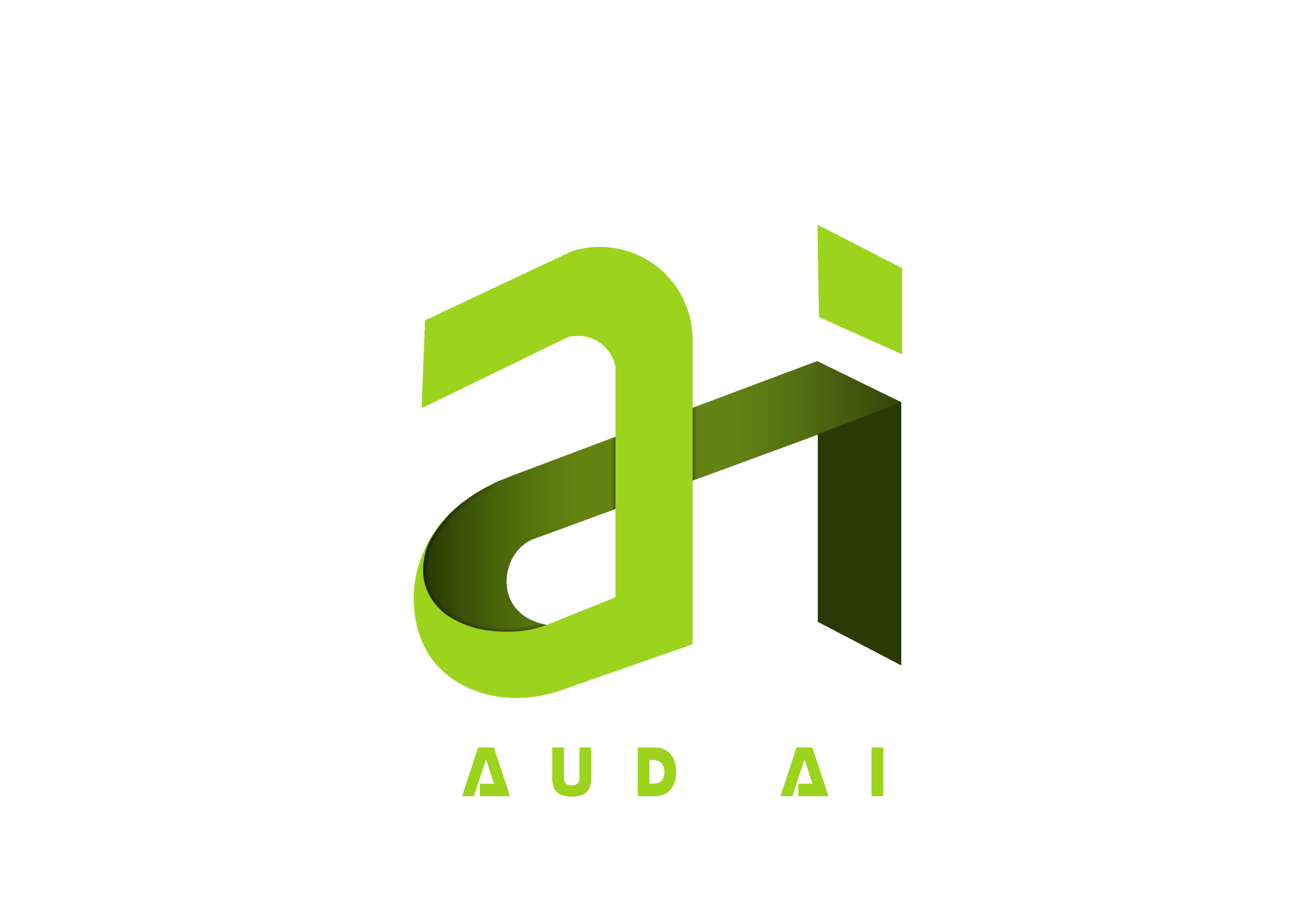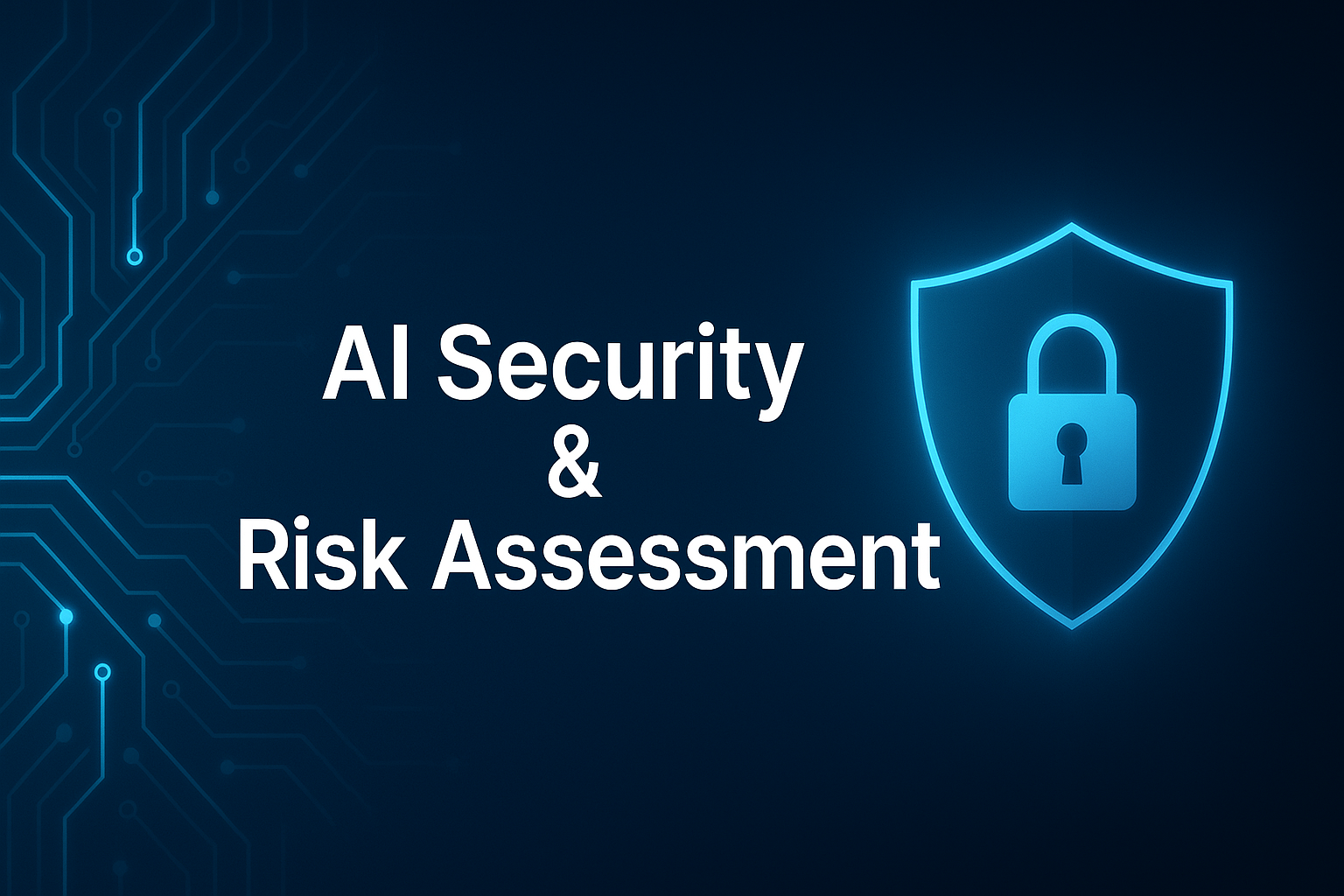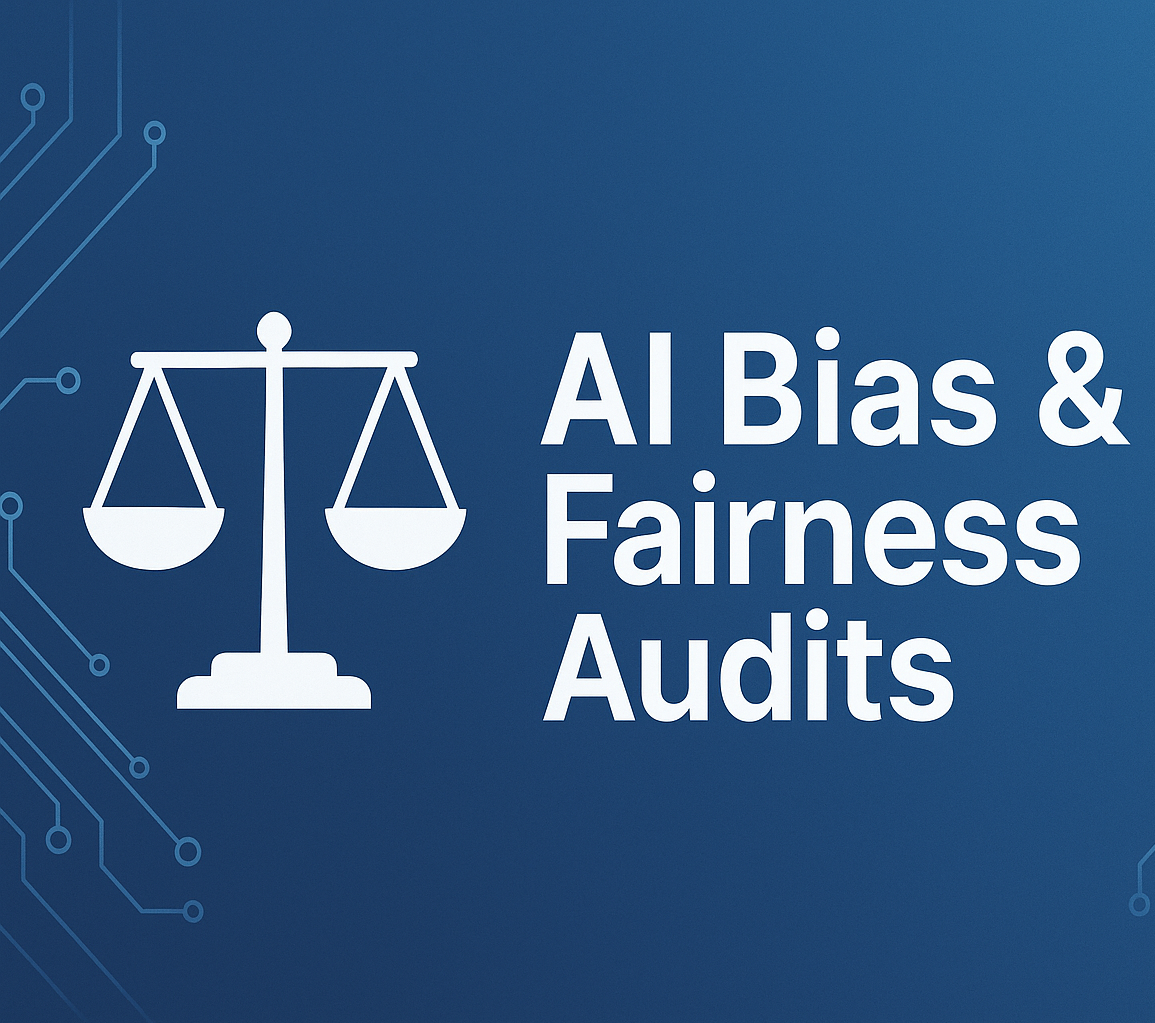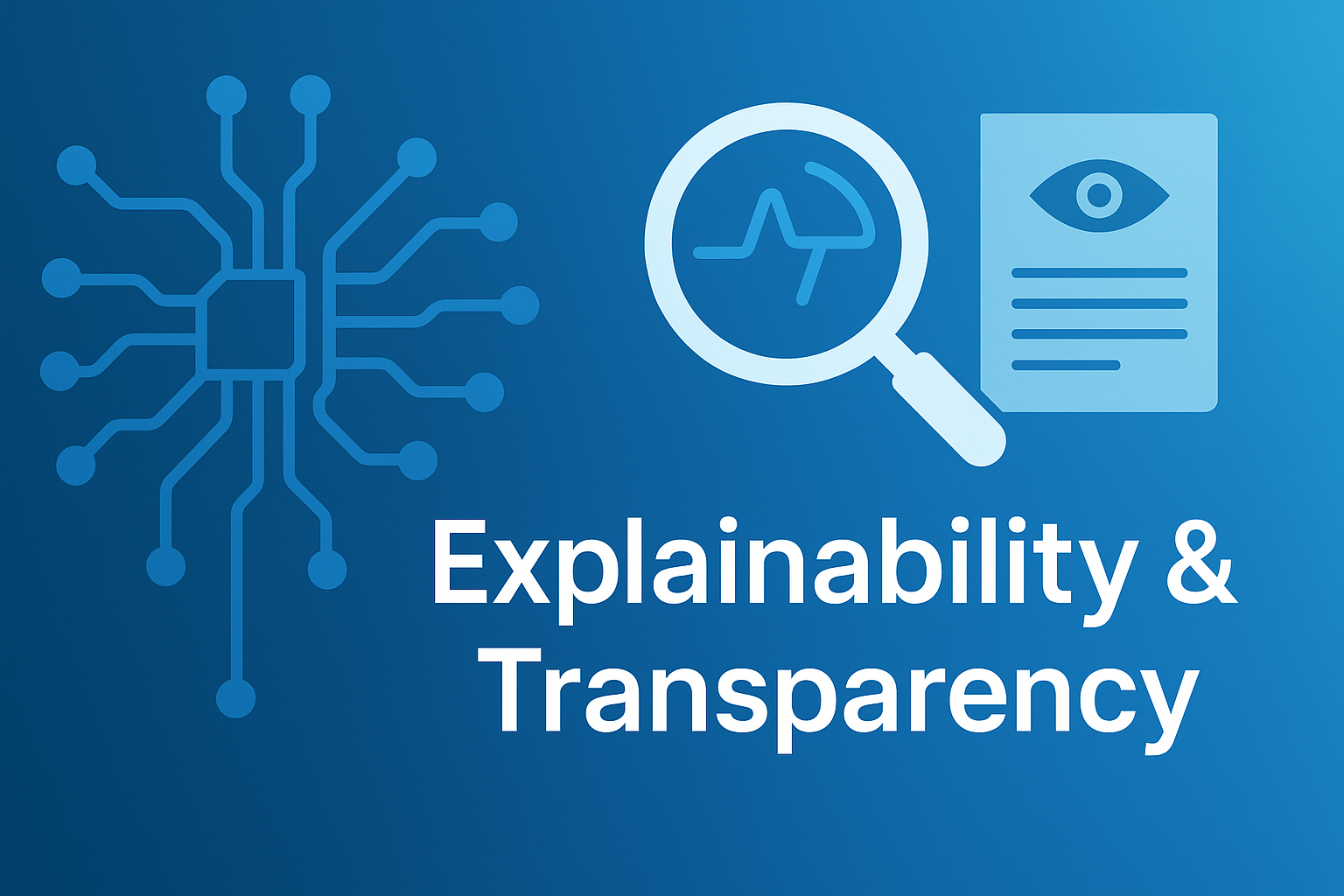The Ultimate Guide to AI Security & Risk Assessment in 2025
Introduction
Importance of AI in Modern Enterprises
Artificial Intelligence (AI) has rapidly become a cornerstone of innovation across industries, from healthcare and finance to manufacturing and retail. Its ability to automate complex tasks, derive insights from big data, and enhance decision-making processes makes it indispensable for modern enterprises.
Why AI Security & Risk Assessment Matters
As AI systems grow in complexity and integration, they also introduce unique security vulnerabilities. Without proper risk assessment, organizations face threats such as data breaches, adversarial attacks, and ethical pitfalls. Ensuring AI security is critical to maintaining trust, compliance, and operational resilience.
Understanding AI Security
Definition and Scope of AI Security
AI security refers to the practices, technologies, and frameworks designed to protect AI systems from threats that could compromise their integrity, availability, confidentiality, and reliability. This includes safeguarding data inputs, algorithms, models, and outputs from malicious interference.
Key Differences Between Traditional Cybersecurity and AI Security
While traditional cybersecurity focuses on protecting networks, systems, and data, AI security addresses dynamic threats specific to AI models. Unlike static software, AI systems learn and evolve, making them susceptible to novel attack vectors like adversarial inputs and data poisoning. Therefore, AI security requires adaptive, model-aware defense strategies.
Common AI Security Threats
Adversarial Attacks on AI Models
Adversarial attacks involve manipulating input data in subtle ways to deceive AI models into making incorrect predictions or classifications. These attacks can undermine applications such as facial recognition, autonomous vehicles, and fraud detection systems.
Data Poisoning and Model Corruption
In data poisoning attacks, attackers inject malicious data into the training datasets, corrupting the AI model’s learning process. This can lead to biased outcomes, security vulnerabilities, or complete model failure.
AI-Powered Phishing and Social Engineering
Cybercriminals are leveraging AI to craft highly convincing phishing emails and social engineering schemes. AI enhances these attacks by personalizing messages at scale, increasing the likelihood of successful breaches.
Privacy Risks in AI Systems
AI systems often process vast amounts of sensitive personal data. Without robust privacy measures, there’s a heightened risk of data leakage, unauthorized access, and non-compliance with regulations like GDPR and CCPA.
Risk Assessment Frameworks for AI
Overview of Risk Management in AI Deployments
Effective AI risk management involves identifying, evaluating, and mitigating potential threats throughout the AI lifecycle. This includes understanding vulnerabilities in data collection, model training, deployment, and ongoing monitoring phases.
NIST AI Risk Management Framework
The National Institute of Standards and Technology (NIST) provides a comprehensive AI Risk Management Framework that guides organizations in assessing and mitigating AI-specific risks. It emphasizes governance, mapping, measurement, and management functions tailored to AI systems.
ISO Standards Relevant to AI Security
ISO/IEC 23894 and other related standards offer guidelines for AI governance, security, and risk management. These standards help organizations implement consistent, internationally recognized practices to safeguard AI technologies.
Industry-Specific Compliance Requirements
Different industries face unique AI security challenges and regulatory obligations. For instance, healthcare must comply with HIPAA, while financial services adhere to PCI DSS and other sector-specific frameworks that address AI-driven processes.
AI Governance and Ethical Considerations
The Role of Ethics in AI Risk Management
Ethical considerations are central to AI risk assessment. Ensuring that AI systems operate fairly, transparently, and without causing harm is critical to maintaining public trust and avoiding reputational damage.
Bias and Fairness Risks in AI Models
AI models can inadvertently perpetuate biases present in training data, leading to unfair or discriminatory outcomes. Regular audits, diverse datasets, and fairness-aware algorithms are essential to mitigate these risks.
Transparency and Explainability Challenges
Many AI systems, particularly deep learning models, function as “black boxes,” making it difficult to understand how decisions are made. Implementing explainable AI (XAI) techniques enhances transparency, supporting better governance and accountability.
Best Practices for AI Security
Secure AI Model Development Lifecycle
Integrating security at every stage of AI development—from data preprocessing to model deployment—reduces vulnerabilities. Adopting DevSecOps principles ensures continuous security integration.
Data Protection Strategies
Encrypting sensitive data, implementing strict access controls, and using anonymization techniques are vital to protecting data used by AI systems from unauthorized access or breaches.
Regular Auditing and Monitoring of AI Systems
Continuous monitoring and periodic security audits help detect anomalies, unauthorized changes, or emerging threats within AI environments, allowing for swift remediation.
Implementing Zero Trust Architecture in AI
Applying Zero Trust principles—”never trust, always verify”—to AI environments strengthens defenses by minimizing implicit trust and enforcing strict verification across all system interactions.
Tools and Technologies for AI Risk Mitigation
AI Security Platforms and Solutions
Organizations can leverage specialized AI security platforms that offer threat detection, vulnerability management, and compliance monitoring tailored to AI environments. These tools provide real-time insights into potential risks and automate response mechanisms.
Role of Machine Learning in Detecting AI Threats
Machine Learning (ML) itself is being utilized to enhance security by identifying patterns indicative of cyber threats. ML-driven security solutions can detect anomalies, predict potential attacks, and adapt defenses dynamically.
Automation in AI Risk Assessment
Automation tools streamline the risk assessment process by continuously scanning AI systems for vulnerabilities, ensuring compliance, and generating actionable reports. This reduces manual workload and enhances accuracy in identifying risks.
Case Studies
Real-World AI Security Breaches and Lessons Learned
Several high-profile incidents, such as adversarial attacks on image recognition systems and data poisoning in recommendation engines, highlight the critical need for robust AI security measures. These cases emphasize proactive risk management and rapid incident response.
Successful Implementation of AI Risk Frameworks
Leading enterprises have demonstrated success by integrating comprehensive AI risk frameworks. For example, financial institutions adopting NIST guidelines have significantly reduced fraud detection errors while maintaining regulatory compliance.
The Impact of Emerging Technologies
How Quantum Computing Affects AI Security
Quantum computing poses both opportunities and threats to AI security. While it can enhance AI capabilities, it also threatens traditional encryption methods, necessitating the development of quantum-resistant security protocols.
The Intersection of Blockchain and AI Risk Management
Blockchain technology offers enhanced transparency, data integrity, and traceability for AI systems. Integrating blockchain can mitigate risks related to data tampering and ensure verifiable audit trails in AI operations.
Regulatory Landscape
Global Regulations Governing AI Security
Countries worldwide are introducing regulations to ensure the safe and ethical use of AI. The European Union’s AI Act, the United States’ Executive Order on AI, and China’s AI governance frameworks are shaping global AI security standards.
Upcoming Legislation to Watch in 2025 and Beyond
New policies focusing on AI transparency, accountability, and cybersecurity are expected. Organizations must stay informed about evolving legal requirements to avoid penalties and ensure compliant AI deployments.
Challenges in AI Security & Risk Assessment
Evolving Threat Landscape
AI security threats are continuously evolving, with attackers developing sophisticated techniques to exploit AI vulnerabilities. Staying ahead requires constant vigilance and adaptation.
Lack of Standardization Across Industries
The absence of universally accepted AI security standards leads to inconsistent protection levels across sectors. Collaborative efforts are needed to establish clear, cross-industry guidelines.
Skills Gap in AI Security Expertise
There is a significant shortage of professionals skilled in both AI development and cybersecurity. Bridging this gap through education, training, and cross-disciplinary collaboration is crucial for robust AI security.
Future Trends in AI Security
Predictive AI for Proactive Threat Management
AI-driven predictive analytics will enable organizations to anticipate and mitigate threats before they materialize, shifting from reactive to proactive security postures.
AI-Driven Compliance Solutions
Automated compliance tools powered by AI will simplify adherence to complex regulatory frameworks, reducing the risk of non-compliance and associated costs.
The Rise of AI Security-as-a-Service (AI-SaaS)
AI-SaaS offerings will become more prevalent, providing scalable, cloud-based AI security solutions that are accessible to organizations of all sizes.
Building a Robust AI Security Strategy
Steps to Develop an Enterprise AI Security Policy
Creating a comprehensive AI security policy involves identifying assets, assessing risks, defining security controls, and establishing incident response protocols. Policies should be regularly updated to address emerging threats and technological advancements.
Training and Awareness Programs
Educating employees, developers, and stakeholders about AI security risks is vital. Regular training sessions and awareness campaigns help foster a security-first culture within organizations.
Collaboration Between AI Developers and Security Teams
Effective AI security requires seamless collaboration between development and cybersecurity teams. Integrating security experts early in the AI development lifecycle ensures that potential vulnerabilities are addressed proactively.
Conclusion
AI security and risk assessment are no longer optional—they are essential components of responsible AI deployment. By understanding the unique threats, adopting best practices, and staying informed about regulatory changes, organizations can safeguard their AI systems and build trust with users. The future of AI depends on a proactive, ethical, and strategic approach to security.
FAQs
What is AI Security & Why is it Important?
AI security involves protecting AI systems from threats that could compromise their integrity, privacy, and functionality. It is crucial to prevent malicious attacks, ensure compliance, and maintain trust in AI technologies.
How Do You Assess Risks in AI Systems?
Risk assessment in AI involves identifying potential vulnerabilities in data, models, and deployment environments, followed by implementing controls to mitigate these risks.
What Are the Biggest AI Security Threats Today?
Key threats include adversarial attacks, data poisoning, AI-powered phishing, and privacy breaches due to improper data handling.
How Can Companies Protect Their AI Models?
Companies should adopt secure development practices, continuously monitor AI systems, use robust data protection measures, and follow established risk management frameworks.
What Are the Future Challenges in AI Risk Management?
Future challenges include keeping pace with evolving threats, addressing regulatory complexities, and overcoming the shortage of AI security expertise.
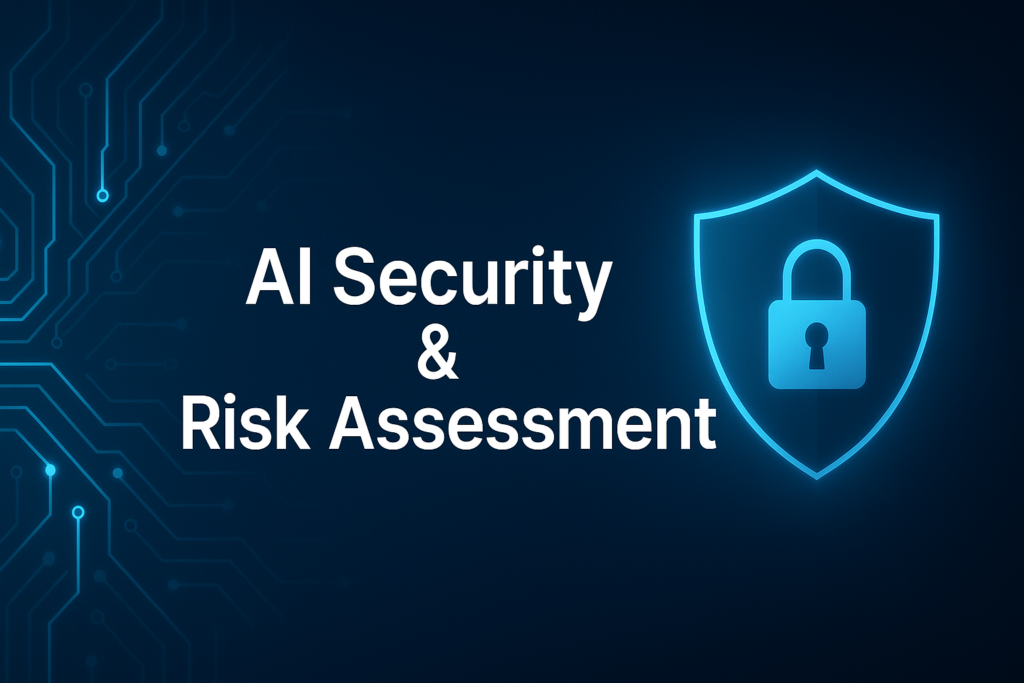
Mastering the EU AI Act and Global AI Regulations
Mastering the EU AI Act and Global AI Regulations
Mastering the EU AI Act and Global AI Regulations
